NEMACOLIN, PA

The Nemacolin patch was built by the Youngstown Sheet and Tube Co. as their
captive mine in 1917-18 and operated as Buckeye Coal Co. This was a nice company
town, with a theatre, tennis courts, amusement hall, and swimming pool. Nemacolin was said to be the largest coal mine in the U.S. in 1919, and it was Greene County's second most productive mine in the 1940s. After nearly 70 years of production the
mine was idled in 1986 and probably sealed in 1988.
Bird's eye view of Nemacolin, showing the gob pile in the upper left, the patch town
in the center, the mine ruins and reclaimed tipple site on the right, and the Monongahela River with tugboat and barges on the far right.
A remarkable photo of the Nemacolin patch taken in 1950.
From the Dec. 3, 1946 Pittsburgh Post-Gazette: "More than 500 'company' houses of the Buckeye Coal Co., Nemacolin, have been sold to their present tenants for about
$1000 each. The houses of the model mine village are of frame construction, equipped with bath, furnace heat, garages, and other improvements. Occupants are the mine employees."
A company-built home in Nemacolin, PA. Nemacolin was an Indian chief.
The mine and coal preparation facility were located down on the Mon River. The
tipple is gone but this hoist house and sign posts are still
there. The refuse pile was still permitted, however, by the bankrupt LTV Steel at the time of this photo.
This shop building at Nemacolin is one of the few remnants of the mine complex there.
Part of the coal processing facility, probably the blending bins, at Nemacolin.
The large slate dump at Nemacolin.
The big Nemacolin prep plant and skip hoist head frame. This is no longer in existence.
The Dorr thickener of the Nemacolin preparation plant.
This was called the "coal loading house" in the 1940's, but the 1920 article in The Coal Industry simply called it a tipple. Perhaps it was
the original tipple before the prep plant was constructed.
This was the school house. I don't think this exists anymore.
One of the company houses when the town was relatively new.
Pleasant living conditions inside a Nemacolin company house.
Our Lady of Consolation Parish was founded in 1923, but the first Mass celebrated in this church was on
Christmas day 1928. Prior to that Mass was held in the school.
In the March, 1920 issue of The Coal Industry there was an article titled "Nemacolin Mine of the Buckeye Coal Co" : "...No expense is being spared to make the Nemacolin
mine of the most modern operations in Western Pennsylvania. Engineering genius has left the tried and usually practiced methods of the past to the rear. The highest degree of efficiency
is being sought through construction and installation which are novel and carefully planned. While much of the present equipment is temporary, and the plant is unfinished, yet a review of the
work that has been completed with some plans for the future should prove instructive until such a time as this mine shall have become, in actual fact, one of the foremost bituminous operations.
The upper half of the hoisthouse is built of brick and contains the hoist, now operated to hoist coal by way of the slope, but will at the completion and equipment of the shaft, be used exclusively
for a man, material and refuse hoist ...
The town is located about a quarter of a mile from the mine and reflects the same careful engineering that was demonstrated in the construction of the plant. It is situated on a hill above the
mine with a view of the river and surroundings. One hundred and twenty houses of the bungalow type have been built; the majority of which are occupied. The designs of the houses are numerous
and each is equipped with running water, electic lights, inside toilet, bath, and laundry. The houses are of frame construction with a deep brown stain on the weather-boarding caused by a
creosote treatment. The walls are plastered and tinted. One of the features of the living room is an attractive open fireplace. The streets are laid out to conform to the contours of the
hill which leaves no two houses on the same elevation and produces an effect different from the houses found in most mining communities. The streets are graded and have a crushed sandstone surface. A
closed sanitary sewerage system, which conforms to state regulations, has been constructed which carries the waste from each house by gravity to a concrete disposal plant located near the fanhouse of the mine.
At a spacing of 500 feet apart throughout the town are located small brick and frame buildings, which cover a double-outlet fire plug. About 250 feet of hose is placed in each of these buildings and
furnishes adequate protection against fire. A school building, constructed in an E-shape, of brick, concrete and stucco is nearing completion and is modern in every respect. The rear wings are so designed
that an addition can be made when the town has grown to an extent that will demand greater accomodations. Domestic science and manual training are part of the educational plan. Protestant and Catholic
churches are being erected, and a modern frame hospital is located near the mine, which gives ready and efficient service to any men that may be injured. A company store is also maintained in a building temporarily.
The completed store building will be a combination store, community theatre and recreation room. The theatre will be used for moving pictures primarily and has a seating capacity of about 600.
The coal obtained from development work was dumped on a storage pile nearly 35 feet high until over 200,000 tons had accumlated. Two steam shovels operating by compressed air are loading the coal
into small cars which are hauled by a locomotive to the river and dumped into barges. The barges are towed to the works of the Carnegie Steel Company at Clairton, Pa., which uses the coal in the largest
by-product coke plant in the world. [This is strange, because Nemacolin was a captive mine for Youngstown Sheet and Tube.] The main hoisting shaft is a three compartment concrete lined 30x50 foot shaft, 240 feet
to the coal. It will be sunk 50 feet below the coal, and two 15 ton skips will hoist the coal. The skips will automatically load at the bottom and dump at the top of the shaft. As the skip reaches the bottom it
opens the coal chute and fills while the skip at the top is dumping. The bottom skip after being loaded raises and closes the chute..."
Nemacolin was only one of several large coal mines that surround Carmichaels Borough. Others included Gateway, Crucible, Mather, Emerald, Dillworth, Cumberland, and especially Robena. These were all
major, large scale mines in the Pittsburgh seam, and they are all closed now. But you can still experience the coal heritage of the region at the annual Bituminous Coal Festival every August in Carmichaels. I went to
it once: They had a parade, someone was crowned Bituminous Coal Queen, and the fire hall was filled with mining memorabilia, MSHA safety exhibits, and vendors like Joy machinery.

Image courtesy of Microsoft Virtual Earth

Image courtesy of Bob Snopik

Jun. 2002 image by author

Jun. 2002 image by author

Jun. 2002 image by author

Jun. 2002 image by author
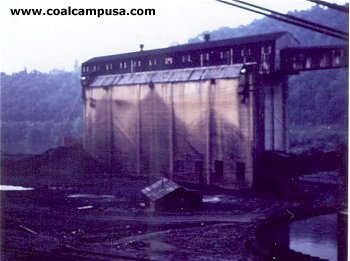
1971 image courtesy of the Coal and Coke Heritage Center, Penn State Fayette

Image courtesy of www.amrclearinghouse.org
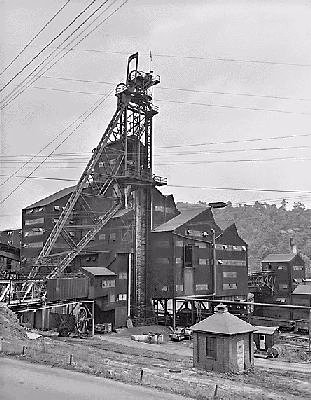
June 1946 image courtesy of the National Archives
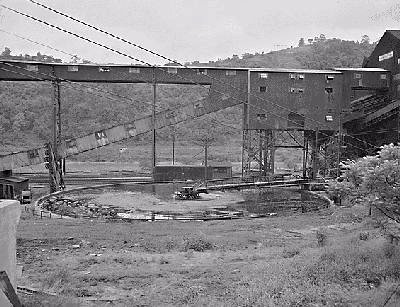
June 1946 image courtesy of the National Archives
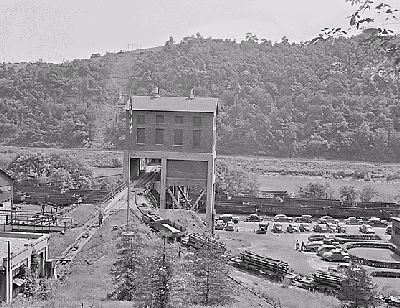
June 1946 image courtesy of the National Archives
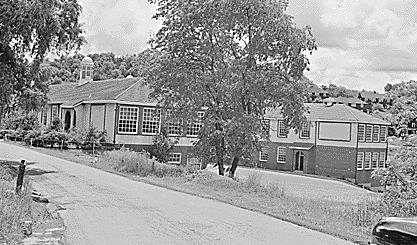
June 1946 image courtesy of the National Archives
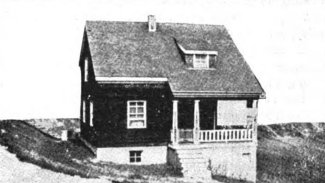
Circa 1920 image from The Coal Industry via Google Books
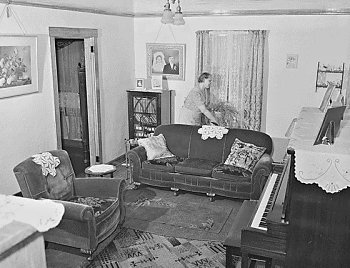
June 1946 image courtesy of the National Archives
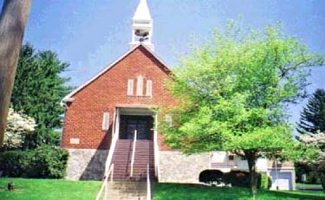
2002 Diocese of Pittsburgh image